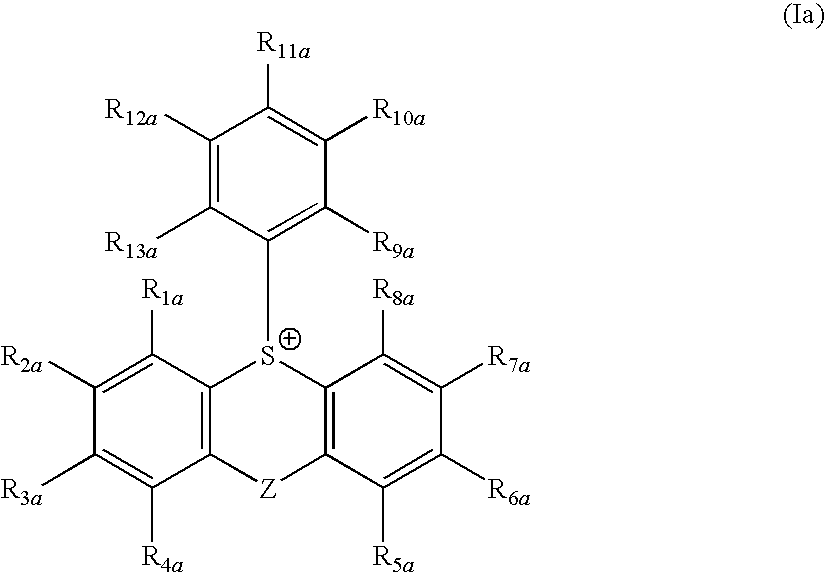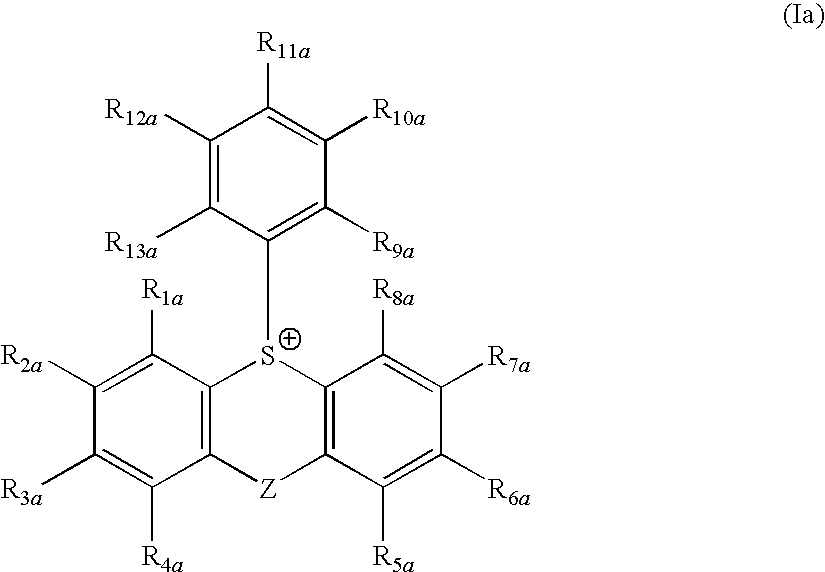Actinic ray-sensitive or radiation-sensitive resin composition, resist film, pattern forming method using the same, and resin
a technology of resist film and resin composition, which is applied in the direction of photosensitive materials, instruments, photomechanical equipment, etc., can solve the problems of resist film acid diffusibility, deterioration of electric properties, and decrease in yield, and achieve high sensitivity, good pattern profile, and high resolution
- Summary
- Abstract
- Description
- Claims
- Application Information
AI Technical Summary
Benefits of technology
Problems solved by technology
Method used
Image
Examples
synthesis example 1
Synthesis of Monomer (M-1)
[0376]10 Parts by mass of p-hydroxystyrene and 0.01 parts by mass of pyridine p-toluenesulfonate were dissolved in 80 parts by mass of ethyl acetate at room temperature. While stirring the resulting solution, a mixed solution containing 13.1 parts by mass of 2-cyclohexylethyl vinyl ether and 20 parts by mass of ethyl acetate was added dropwise at room temperature. After the dropwise addition, the reaction was further allowed to proceed at room temperature for 24 hours.
[0377]The reaction solution was made basic by adding triethylamine and washed with ion-exchanged water, and the organic layer was concentrated and then purified by column chromatography with hexane / ethyl acetate to obtain 14.7 parts by mass of Monomer (M-1) shown below.
synthesis example 2
Synthesis of Monomer (M-2)
[0378]The reaction was performed in the same manner as in Synthesis Example 1 except for using 20.9 parts by mass of 2-(4-cyclohexylphenoxy)ethyl vinyl ether in place of 2-cyclohexylethyl vinyl ether in Synthesis Example 1, whereby 19.3 parts by mass of Monomer (M-2) shown below was obtained.
synthesis example 3
Synthesis of Monomer (M-3)
[0379]While stirring 50 parts by mass of dibenzothiophene in 250 parts by mass of trifluoroacetic acid at room temperature, 30.8 parts by mass of 30% hydrogen peroxide water was gradually added dropwise. After stirring for 1 hour, the reaction solution was poured in 3,000 parts by mass of water, and the solid precipitated was collected by filtration. The obtained solid was recrystallized in acetonitrile, then filtered and vacuum-dried to obtain 22.5 parts by mass of a sulfoxide form.
[0380]2 Parts by mass of phosphorus(V) oxide and 6.7 parts by mass of the sulfoxide form were added to 18 parts by mass of methanesulfonic acid, and 7.1 parts by mass of 2-phenylethyl acetate was added with stirring. After reaction at room temperature for 6 hours, the reaction solution was poured in ice water and filtered. While stirring the filtrate, 15.3 parts by mass of potassium iodide was added to precipitate a solid. The obtained solid was collected by filtration and wash...
PUM
| Property | Measurement | Unit |
|---|---|---|
| mol % | aaaaa | aaaaa |
| mol % | aaaaa | aaaaa |
| roughness | aaaaa | aaaaa |
Abstract
Description
Claims
Application Information
 Login to View More
Login to View More - R&D
- Intellectual Property
- Life Sciences
- Materials
- Tech Scout
- Unparalleled Data Quality
- Higher Quality Content
- 60% Fewer Hallucinations
Browse by: Latest US Patents, China's latest patents, Technical Efficacy Thesaurus, Application Domain, Technology Topic, Popular Technical Reports.
© 2025 PatSnap. All rights reserved.Legal|Privacy policy|Modern Slavery Act Transparency Statement|Sitemap|About US| Contact US: help@patsnap.com



